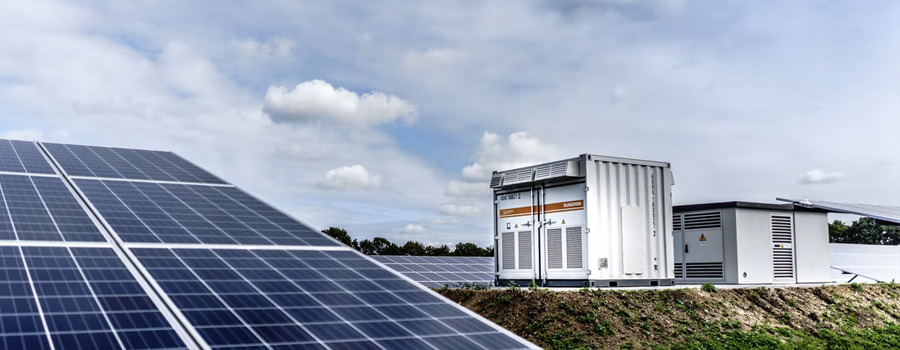
As one of the most critical components of a photovoltaic power station, the quality of photovoltaic modules directly affects the station's power generation performance. During the construction of photovoltaic power stations, due to the large quantity of photovoltaic module equipment, susceptibility to damage and failure, and various environmental factors such as weather, it is necessary to perform full-process monitoring of module quality during production, delivery to the site, and installation. Photovoltaic projects typically have short construction cycles and require high-quality products to be provided in a short period. If the production line conditions do not meet the requirements, it can lead to a dilemma between quality and supply progress, impacting the overall operation of the power station. To ensure the stability and reliability of module equipment during later operation, a comprehensive tracking system for photovoltaic module supervision, delivery, and installation inspections has been established.
NOA provides comprehensive supervision services to ensure the safety and reliability of photovoltaic equipment production for its customers. By adopting a method involving full-time supervision at the factory, the supervising engineers oversee the entire process of equipment production, starting from raw material preparation and equipment fabrication to complete equipment packaging and shipment. The supervision primarily includes two main aspects: first, control over equipment production progress (mainly involving planning/implementation and analysis, improvement, and tracking in case of substandard equipment output); second, control over equipment production quality (including daily data collection/summation, analysis, improvement, and tracking of anomalies, daily initial inspections, quality process control, sampling inspection according to national standards, and shipment management)

I.Factory Audit
Quality system, management manual, product equipment, production equipment, manufacturer of testing equipment, measurement, etc
II.Document Review
Management system, CDF documents
III.Raw Material Verification
Quality control of material components
IV.Process and Production Line Inspection
Quality monitoring of critical production processes during the manufacturing process
V.Finished Product Inspection
Performance testing, equipment consistency, outgoing inspection, etc
VI.Third-Party Laboratory Rechecking
VII.Supervision of Packing and Shipment
 1.Business Consultation
1.Business Consultation
2.Providing Product Technical Specifications and Production Schedule
3.Contract Signing
4.Engineer On-Site Supervision
5.Daily Issuance of Supervision Logs
6.Issuance of Supervision Reports
(1) Solar cell - Its main function is to generate electricity;
(2) Tabbing ribbon - Its main function is to collect and channel the electricity generated by the solar cells to the junction box;
(3) EVA (Ethylene Vinyl Acetate) - Its main function is to bond and fix tempered glass and the main electricity-generating body, encapsulating the main electricity-generating body and the backsheet;
(4) Tempered glass - Its role is to protect the main electricity-generating body (solar cells);
(5) Backsheet - Its role is to seal, insulate, and waterproof (usually made of materials like TPT, TPE, which must be resistant to aging);
(6) Aluminum alloy frame - It acts as a protective compression part, providing certain sealing and support, enhancing mechanical strength;
(7) Junction box - It protects the entire power generation system and serves as a current transfer station;
(8) Silicone - Used to seal the junction between the module and the aluminum alloy frame, and the junction between the module and the junction box.
The main quality risk point is latent cracks:
(1) Latent cracks may lead to hot spot effects;
(2) They can accelerate the power attenuation of solar cells;
(3) They can affect the normal service life of the module;
(4) Under mechanical loads, they can expand and potentially cause open-circuit damage.
Other quality risk points include: virtual soldering, busbar breaks, light and dark areas, scratches on solar cells, and dark spots.
Main raw and auxiliary materials:
(1) Glass: dimensional accuracy, light transmittance, tempering, impact resistance, appearance;
(2) EVA (Ethylene Vinyl Acetate): dimensional accuracy, shrinkage rate, cross-linking degree, light transmittance after cross-linking, appearance;
(3) Backsheet: dimensional accuracy, interlayer peel strength, appearance;
(4) Busbars & Ribbon: dimensional accuracy, resistivity, elongation, coating melting temperature, tensile strength, appearance;
(5) Junction Box: adhesive strength to the backsheet, connection strength between leads and casing, high/low-temperature mechanical stability, appearance;
(6) Potting compound for junction box, sealing silicone: appearance, surface drying time, curing time, elongation at break;
(7) Aluminum frame: Vickers hardness, dimensions, riveting static load, appearance.










Tel:+86-400 821 5138
Fax:+86-21 3327 5843
Email:noa@noagroup.com